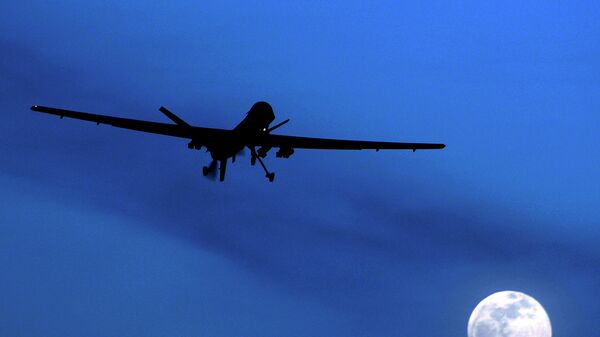On Wednesday, London-based human rights non-governmental organization (NGO) Amnesty International published a report that included evidence of two civilian deaths and three injuries as the result of two US airstrikes in Somalia in February.
By interviewing community members, including the victims’ relatives, the NGO was able to determine that those killed and maimed by US airstrikes on February 2 and February 24 near the southern Somali city of Jilib were not members of al-Shabaab, a terrorist militant group closely aligned with al-Qaeda. AFRICOM reported no civilian casualties in either strike.
The same day, AFRICOM announced it would begin releasing quarterly reports at the end of April “on the status of ongoing civilian casualty allegations and assessments.”
Fighting for Acknowledgment of Civilian Casualties
“This is a welcome, though long overdue, step towards providing truth and accountability for the victims of US air strikes and their families in Somalia and beyond,” Amnesty International’s Director for East and Southern Africa Deprose Muchena said in a Wednesday news release. “It’s shocking that it has taken more than a decade of AFRICOM’s secret air war in Somalia for this to happen.”
“We continue to stand in solidarity with families of civilians who have been killed or injured in US attacks, only to have their loved ones smeared as ‘terrorists’ and have their plight ignored. The truth must come out and they deserve transparency, accountability and reparation – all of which have been sorely lacking from the US military to date,” he said.
“Since I took command last year, we have been reviewing and revising our [civilian casualty] tracking, assessment and reporting procedures,” AFRICOM chief Gen. Stephen Townsend said in the Wednesday news release. “To demonstrate our transparency and commitment to protecting civilians from unnecessary harm, we plan to publicize our initial report by the end of this month and we will provide quarterly updates thereafter.”
In reality, AFRICOM has been on its heels since early 2019, when Amnesty International first produced compelling evidence that AFRICOM was covering up civilian casualties.
A March 2019 report by Amnesty International titled “The Hidden US War in Somalia” proved that 14 civilians were killed in five airstrikes between October 2018 and February 2019 - a time period in which AFRICOM had boasted that “no AFRICOM airstrike resulted in any civilian casualty or injury.”
The damning report, which included references to airstrikes not previously publicly admitted to by the Pentagon, compelled AFRICOM officials to “review” data from the airstrikes, during which they discovered "credible evidence" of some civilian casualties because of a "reporting error.” Even then, the US command would not admit to all the civilian deaths alleged by Amnesty International.
Omissions Are by Design
However, as Sputnik reported at the time, the omission of civilian casualties in airstrike reports isn’t by accident, but by design.
Somalia, along with Yemen and Pakistan, are regarded by the Pentagon as “undeclared war zones,” where US presence and conduct is authorized and governed by the 2001 Authorization for Use of Military Force Against Terrorists (AUMF) that then-US President George W. Bush signed into law in the days after the September 11 terrorist attacks.
The AUMF gives the president broad authorization to use "force against those nations, organizations or persons he determines planned, authorized, committed, or aided” the September 11 attacks. This authorizes - under US law, at least - US military operations in Somalia against al-Shabaab, a militia group that is a close al-Qaeda affiliate.
However, few rules existed to govern these operations until 2013, when then-US President Barack Obama laid out vague guidelines that limited lethal strikes outside of an "area of active hostilities" and against targets that pose a "continuing, imminent threat to US persons."
These standards required a “near certainty” of the target's presence, as well as the absence of potential civilian casualties, before an airstrike could be authorized on a specific place. However, soon after US President Donald Trump took office, these rules began to shift, and the standards for ordering a strike to simply require "reasonable certainty" of the presence of al-Shabaab fighters, the New York Times reported in October 2017, although Amnesty International noted the change as early as March of that year.
In other words, civilian casualties are no longer part of the equation, and all people killed by US airstrikes are considered to be enemy combatants by AFRICOM. It’s unclear how AFRICOM’s new commitment to reporting on civilian casualties will alter, or be hindered by, the Trump administration’s present understanding of the AUMF.
In 2019, the US conducted more airstrikes in Somalia than in any previous year, with 63 attacks in the East African country. However, following al-Shabaab’s January 2020 attack against US and Kenyan forces across the border at Manda Bay Air Base in Kenya, the tempo of US airstrikes against the group increased still further; Sputnik reported last month that if air operations continued at this pace, the number would top 100 airstrikes by the end of the year.


